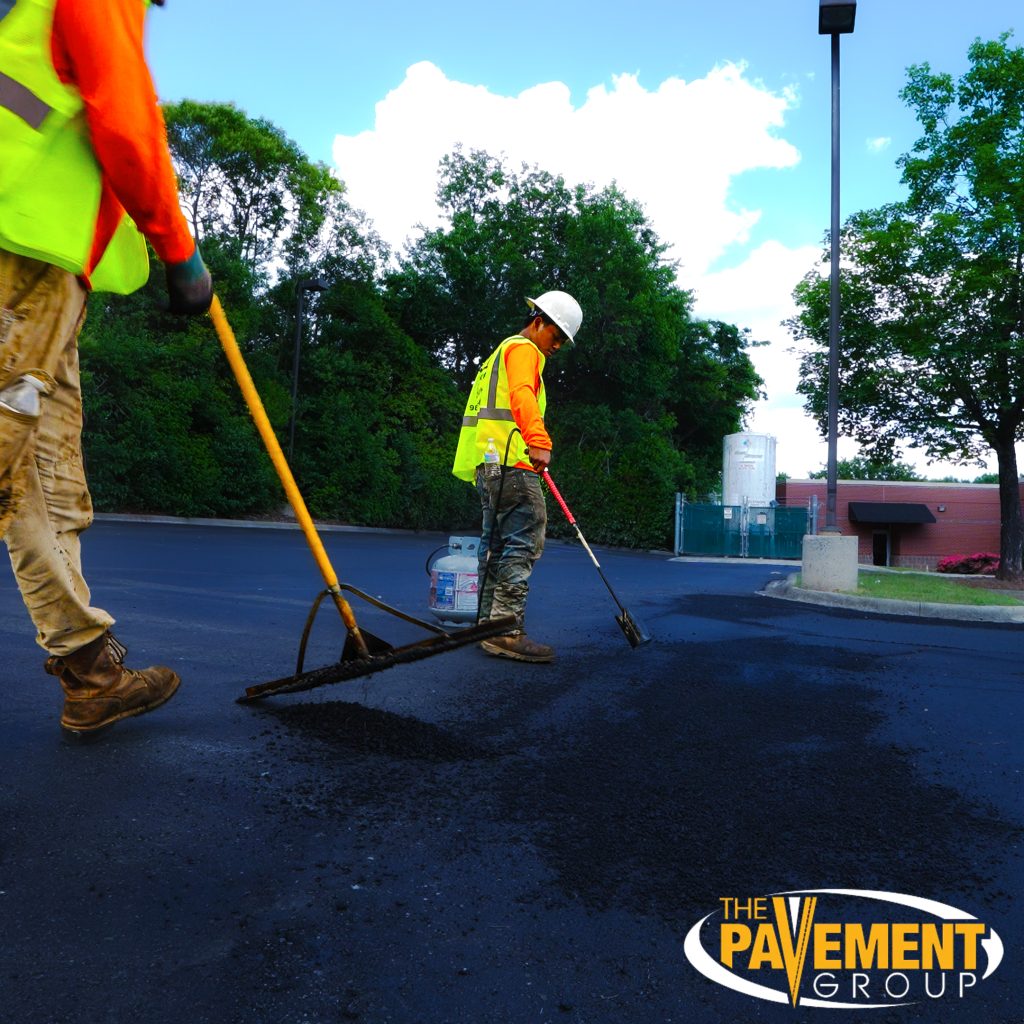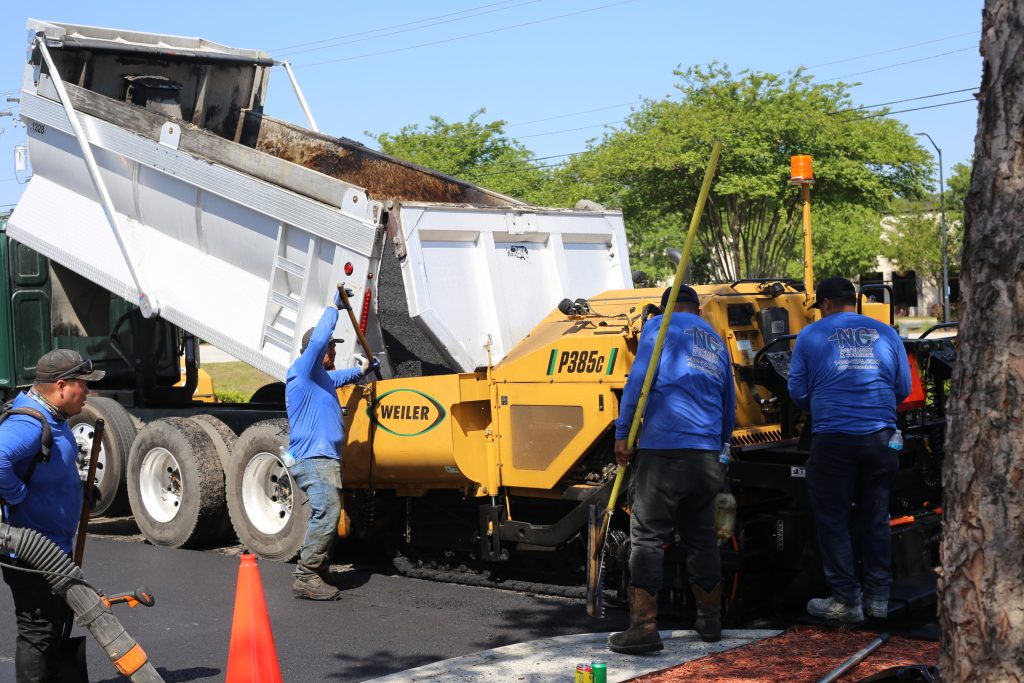Industrial pavements face extreme pressure every single day. Heavy trucks, forklifts, and machinery put constant stress on the surface. Without proper design and maintenance, pavement cracking can appear fast and spread quickly.
Understanding how to prevent pavement cracking under heavy industrial loads helps protect your investment and improve safety. This guide explains the main causes, prevention techniques, and best maintenance practices for long-lasting, durable pavement.
Understanding Why Pavement Cracks Under Heavy Loads
Pavement cracks form when stress exceeds the material’s strength. Heavy industrial loads apply repeated force that slowly weakens the surface. Over time, even the strongest pavements can show signs of fatigue.
Temperature changes, moisture, and poor drainage often make the situation worse. Once small cracks appear, water seeps in and widens them, leading to larger structural issues.
The Role of Pavement Design in Crack Prevention
A strong pavement starts with smart design. Engineers must consider traffic volume, load weight, and subgrade conditions. Industrial pavements require thicker layers and stronger materials than regular roads.
Proper base thickness, drainage systems, and high-quality asphalt or concrete mix reduce the risk of early cracking. Each element plays a part in handling stress from heavy equipment.
Cheap materials may save money upfront but often lead to early failure. Using high-grade asphalt or concrete ensures better flexibility and durability. Reinforced materials can absorb heavy loads more effectively.
Importance of Quality Materials
Selecting the right aggregate type and binder also improves strength. Always use materials tested for industrial use and designed to handle constant stress.
Regular Maintenance Keeps Pavements Strong
Even the best pavements need care. Routine inspections can catch small cracks before they spread. Cleaning, sealing, and resurfacing help extend the pavement’s life.
A solid maintenance plan saves businesses thousands in repair costs. It also ensures smooth operations with fewer disruptions caused by surface damage.
Load Management and Weight Distribution
Uneven weight distribution can cause certain pavement areas to weaken faster. Proper traffic patterns and designated loading zones help balance the stress.
Using rubber mats or steel plates in high-traffic areas can prevent direct pressure damage. This simple strategy can extend the lifespan of industrial pavement.
The Impact of Weather on Pavement Durability
Extreme weather conditions speed up cracking. Heat makes asphalt soft, while cold temperatures cause contraction. Rainwater and ice worsen cracks by seeping into the pavement layers.
Using weather-resistant sealants helps reduce the impact. In industrial settings, scheduling inspections after severe weather is also important.
Drainage and Subgrade Support
Poor drainage is one of the top reasons for pavement failure. Water trapped beneath the surface weakens the base, causing cracks and uneven areas.
Good drainage systems and compacted subgrade layers protect the pavement from moisture damage. Regularly clearing drains and ditches keeps the system working properly.
Pavement Reinforcement Options
Modern reinforcement techniques improve pavement performance. Geogrids, steel reinforcements, or fiber materials add extra strength to industrial pavements. These reinforcements help distribute loads evenly and reduce stress on the surface.
When used correctly, reinforcement can double the pavement’s lifespan. It’s an investment that pays off in long-term savings and reliability.
Sealcoating and Crack Sealing Techniques
Sealcoating acts like a shield for asphalt pavements. It protects against UV rays, oil spills, and moisture damage. Crack sealing stops small cracks from spreading and prevents water infiltration.
Both methods should be done regularly for the best results. They keep the pavement looking new while preventing structural deterioration.
How to Create a Pavement Maintenance Schedule
A good maintenance schedule includes regular inspections, cleaning, and crack repairs. It’s best to inspect industrial pavements every three to six months.
Documenting wear patterns helps spot recurring issues early. Scheduling sealcoating every few years keeps the pavement strong and attractive.
Conclusion
Preventing pavement cracking under heavy industrial loads is all about preparation and consistency. Quality design, materials, and maintenance work together to ensure long-lasting results.
Every crack you stop today saves you bigger repairs tomorrow. Keep your pavement strong, safe, and ready for any load that comes its way.
Build Pavement That Lasts
Is your industrial pavement showing early signs of wear? Don’t wait until cracks spread and repairs become costly.
Schedule a professional inspection today and take the first step toward longer-lasting, crack-free pavement. Strong foundations start with smart decisions.
Frequently Asked Questions
1. What causes pavement cracking under heavy industrial loads?
Pavement cracking happens when the surface can’t handle repeated pressure from trucks and equipment. Heavy loads weaken materials over time. Poor drainage and extreme temperatures also worsen the problem. Preventive design and regular maintenance help reduce cracking risks.
2. How can pavement design help prevent cracking?
Proper design ensures that pavement layers support expected loads. Engineers consider soil conditions, load weight, and traffic frequency. Strong base materials and adequate thickness are critical. With good design, pavements can handle stress without breaking down.
3. What materials work best for industrial pavements?
High-quality asphalt and concrete are ideal for heavy-duty pavements. Reinforced asphalt mixes with polymers offer better flexibility. Concrete pavements with steel reinforcements resist cracking under constant loads. Always choose materials suited for industrial traffic.
4. Why does drainage matter for preventing pavement cracking?
Standing water weakens the base and causes cracks to spread faster. Good drainage systems remove water quickly and protect subgrade layers. Regular cleaning prevents blockages that trap moisture. Dry pavement stays stronger and lasts longer.
5. How often should industrial pavements be inspected?
Inspections should happen at least twice a year for heavy-use areas. Frequent checks identify cracks or soft spots early. Quick repairs prevent bigger damage later. Consistent maintenance keeps pavements safe and functional.
6. Can weather cause pavement cracking?
Yes, extreme heat and freezing conditions both damage pavement. Temperature changes cause materials to expand and contract. Rain and ice worsen small cracks by adding moisture. Using sealants and proper materials helps resist weather damage.
7. What is sealcoating, and why is it important?
Sealcoating adds a protective layer over asphalt surfaces. It blocks water, oil, and sunlight from weakening the pavement. Regular sealcoating keeps the surface flexible and reduces cracking. It’s a simple way to extend pavement life.
8. How does load management affect pavement health?
Distributing loads evenly reduces surface stress. Using traffic control and loading zones helps protect specific areas. Reinforcing high-load spots prevents early damage. Balanced load management keeps pavement stable and durable.
9. What are geogrids, and how do they help pavements?
Geogrids are reinforcement materials used beneath pavement layers. They spread loads evenly and strengthen weak soils. This prevents cracks caused by uneven pressure. Geogrids improve pavement stability in industrial environments.
10. How can I extend the life of my industrial pavement?
Use quality materials and strong design from the start. Schedule regular inspections and sealcoat every few years. Keep drains clear and repair cracks quickly. Preventive care ensures your pavement lasts for decades.


